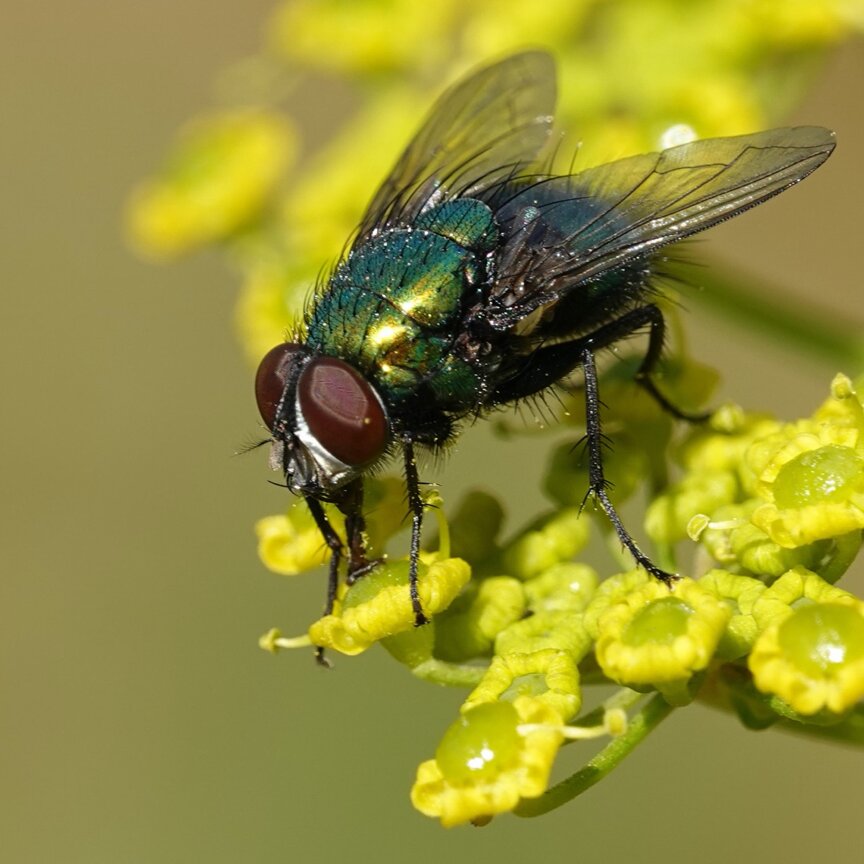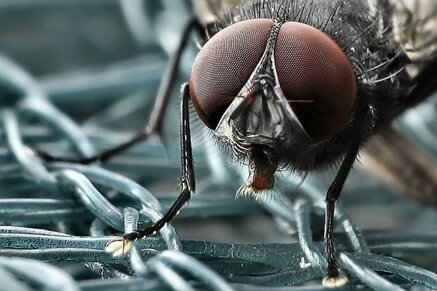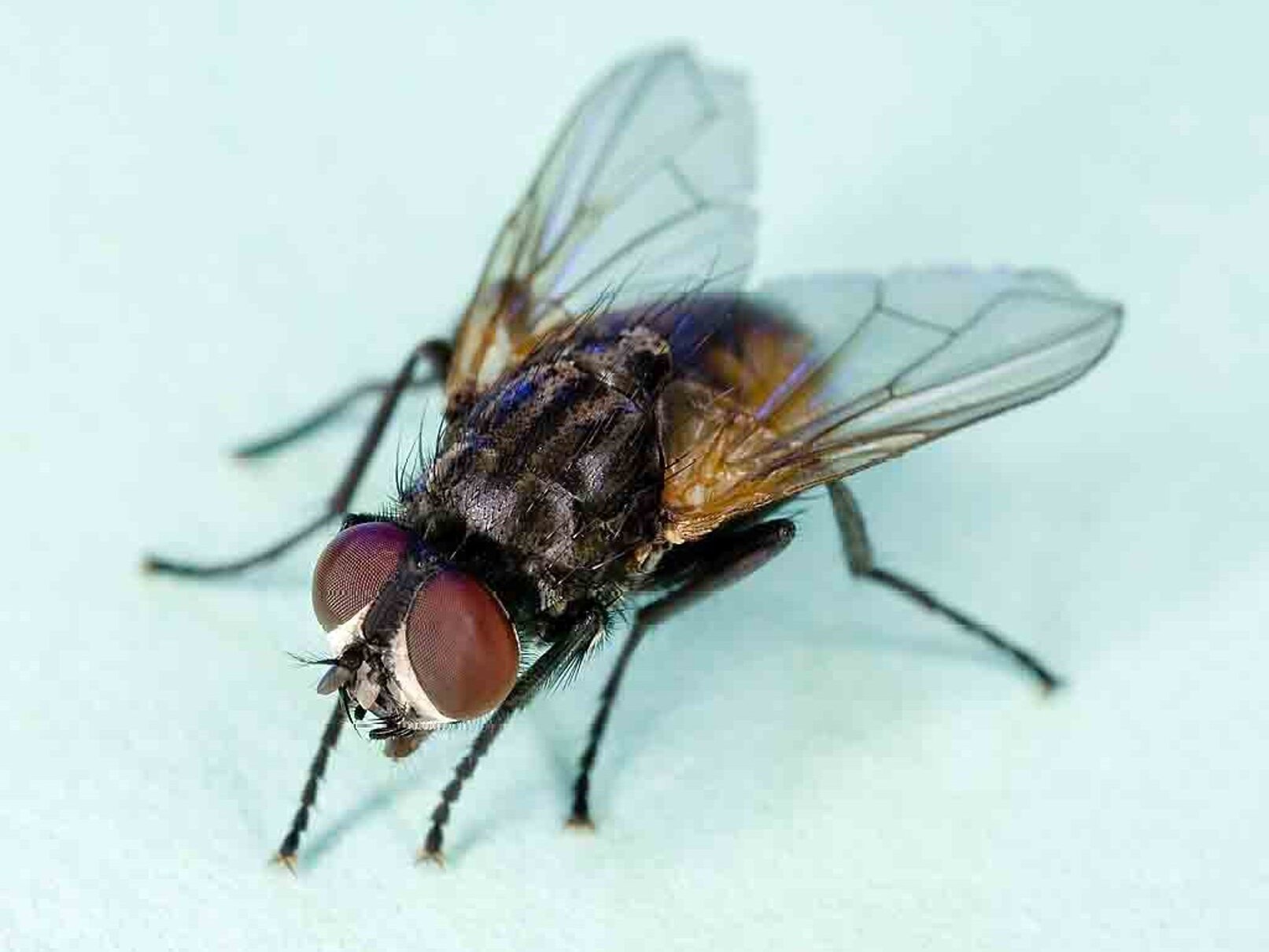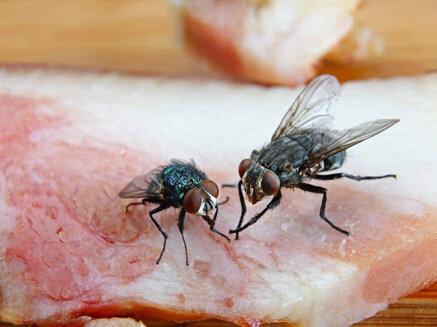Ecopiakos Ecological Solutions - VAT 05534520878

The FLIES
Flies are part of the order Diptera (Diptera), a name that comes from the ancient Greek δις (dis) and πτερόν (pteron) which literally means: two wings. These insects are characterized by using only one pair of wings to fly, while another pair is reduced to stubs and serves to regulate flight, informing the flies (and other similar insects) about the position of their body while flying. Diptera do not include only flies, but also other flying insects such as blowflies and mosquitoes. The housefly (Musca domestica), the black one with a size between a gnat and a blowfly, is the most common and the one we are most familiar with.
Features
It is the most widespread insect in the world and is found mainly in temperate regions. Particularly abundant during the warm season, the fly reaches its maximum activity and longevity at temperatures between 10 and 27 °C. Measuring 4 to 8 mm long, it has large compound eyes and flies with only one pair of membranous wings because the second pair is reduced and is used by the animal for balance.
The body, divided into head, thorax, and abdomen, is black with lighter bands and has scattered bristles. On the head, there is a pair of short antennae and the mouthparts modified into a proboscis-like structure.


Behaviors
The fly always lives near human settlements because it lays its eggs on decomposing organic food, especially fruit and vegetables, and on excrement, which it locates thanks to its powerful sense of smell. The complete metamorphosis, which includes the transition from egg to larva, pupa, and adult stage, takes place in less than 10 days and this allows the fly to reproduce very quickly and give rise to 10-12 generations in a single summer. At the beginning of spring, the insect leaves its winter shelters and begins to reproduce; the female lays during her life, which lasts on average 15-20 days, about 500 eggs. It is a diurnal insect particularly active during the hottest and driest hours of the day, between 2 and 4 pm. It is not able to chew but needs liquid or dissolved food that it can suck up with its proboscis. It is an excellent flyer that moves at a speed of 24 km/h and beats its wings up to 1,000 times per minute, producing a typical buzzing sound.
Damages caused

Flies generally feed on decaying organic matter, but they are also attracted to sugary foods. The damage they cause is indirect, as they can carry pathogenic microorganisms and cause diseases since they land indiscriminately on excrement, food, and carcasses.
Ecopiakos Ecological Solutions - VAT 05534520878
